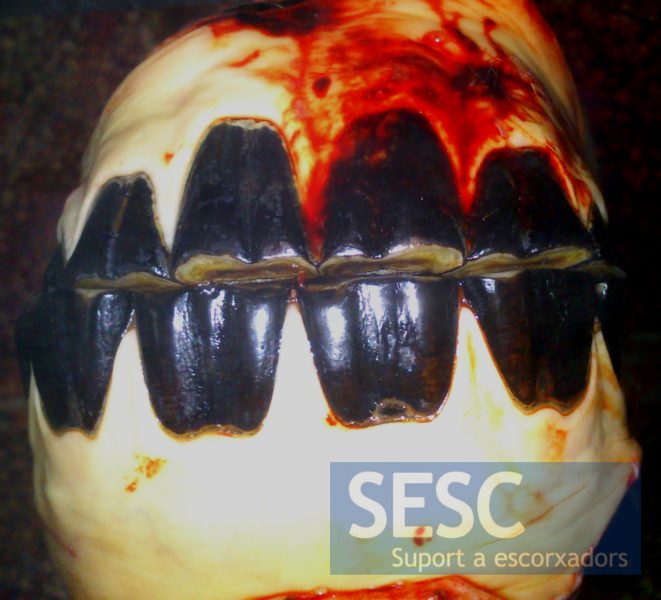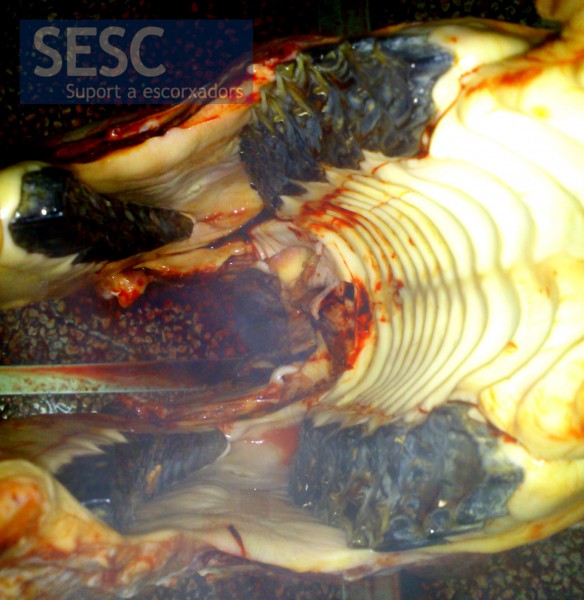Black teeth horse
It has been reported that certain pigments present in food can cause changes in teeth colouration because they deposit on the cement covering the teeth. For example, in animals that eat beetroot or even feces. We have not found, though, any reference linking consumption of eggplants with this change in horses, in any case it can not be excluded.
As a curiosity... we have read that an ancient asian upper class tradition, in certain countries, consisted on making a dye from dark eggplant skins to dye their teeth black, this practice is known as Ohaguro in Japan .
However, foodborne teeth color changes do not usually have such a uniform distribution. Other causes could be a congenital cement abnormality or due to drug administration but, again, this has not been described.
Another possibility that could explain a change in color of the teeth is that it was a chronic fluorosis due to the ingestion of drinking water with high fluoride content or ingestion of pesticides containing fluoride salts.




2 comment(s)
Comment from Veterinary pathology group in Linked In:
By Jean-Martin Lapointe
Comparative Pathologist at McGill University
That is very dark ! I haven’t seen anything like this before, but according to some quick googling, the pigment in eggplant peel is anthocyanins, which are known to color teeth, so the eggplant hypothesis for this change seems valid to me. Also, the fact that the outside is stained, but apparently not the internal layers (as seen on the worn surfaces), would tend to support an external cause rather than a systemic one.
Comment from “Livestock Health: International information portal for veterinarians” group in LinkedIn:
Michele Johnson-Simpson, Animal Health Consultant
Very interesting, other than color was there any more differences? Was it only in the enamel layer?
Our answer: Non reported to us, at least. Just the enamel apparently!